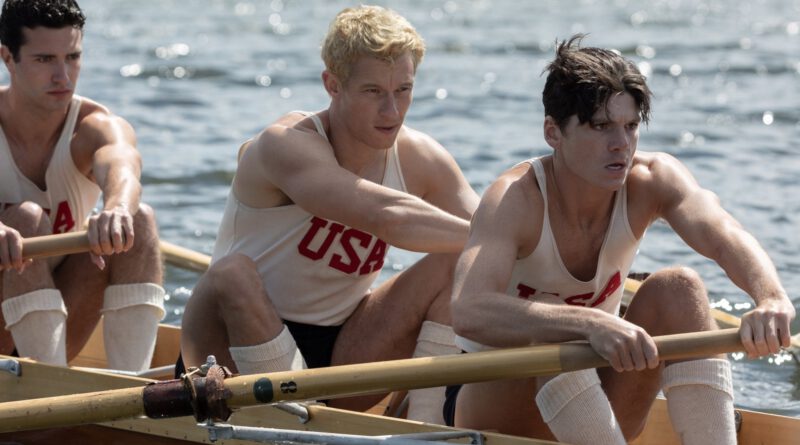‘The Boys in the Boat’ review: George Clooney’s WWII sports drama aims high, lands low
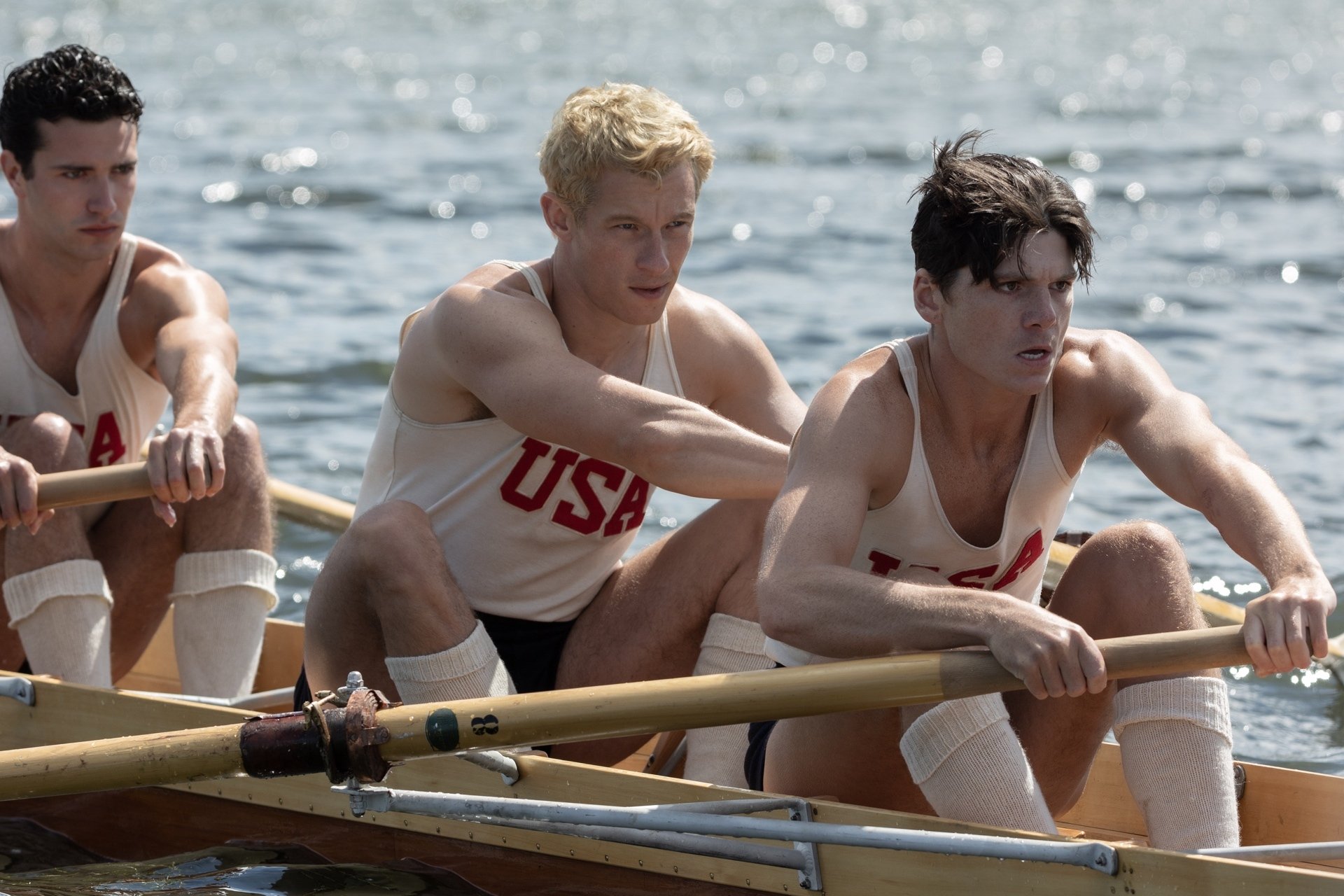
It’s been a bad week for aquatic cinema, between the middling DC farewell Aquaman and the Lost Kingdom and the George Clooney-directed period drama The Boys in the Boat. The two have little in common in terms of subject matter and style, but they’re plagued by the same sense of glum involvement.
Clooney’s Olympic drama follows the young men of the University of Washington’s rowing crew as they learn to oar their way to victory at the 1936 Berlin Olympics, but it never takes a complete interest in its characters or their physicality. Few films outside of pop star biopics feel so distinctly lab-engineered, with obstacles treated as checklists around which to structure the bare bones of screenplay, rather than as human drama to be engaged with, and eventually overcome.
What is The Boys in the Boat about?
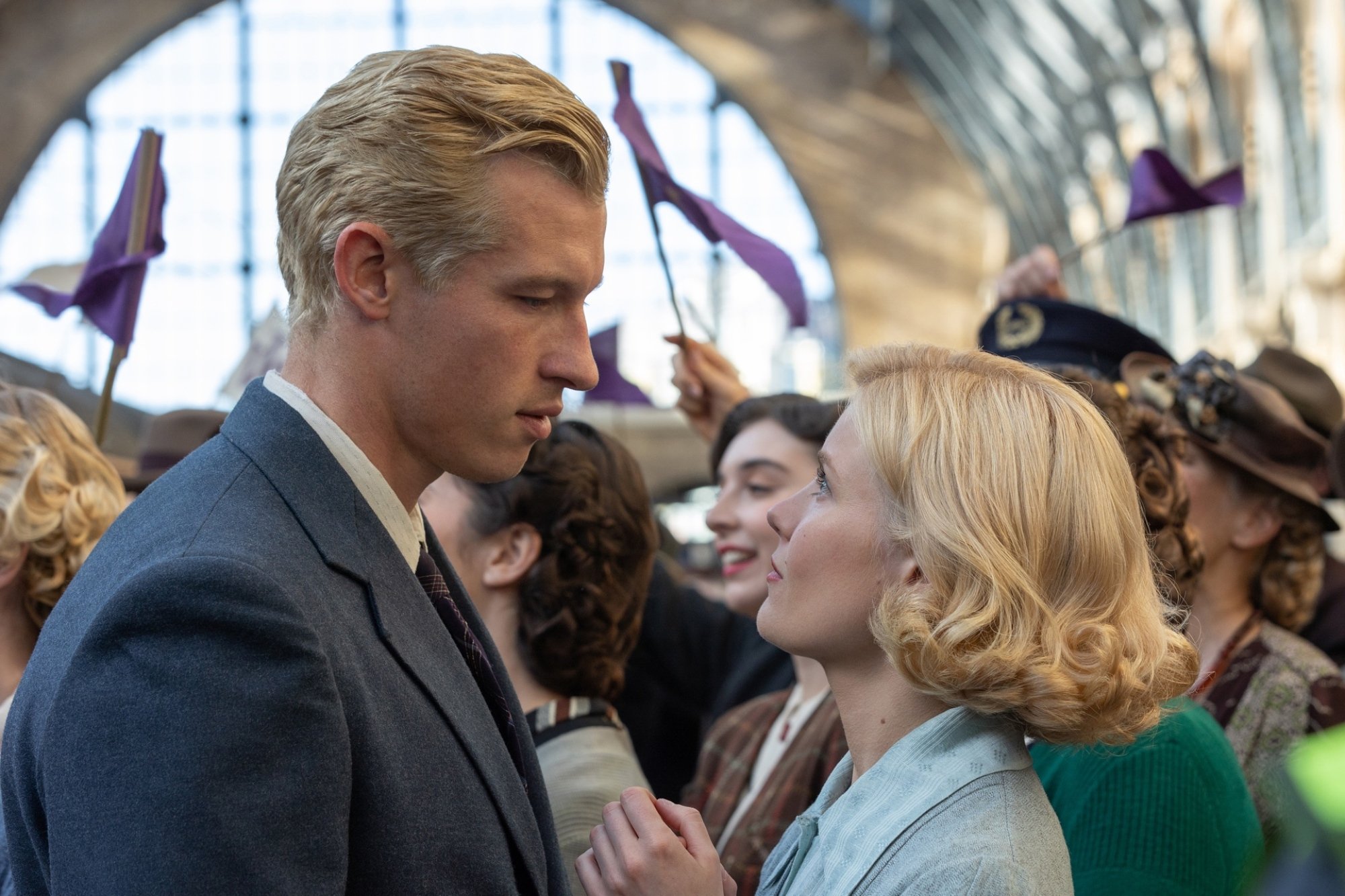
Set in the throes of the Great Depression, The Boys in the Boat — adapted by screenwriter Mark L. Smith from Daniel James Brown’s book of the same name — follows real-life boy and Olympian rower Joe Rantz (Callum Turner) in his pre-boating days, as he attends university lectures while trying to find odd jobs to make ends meet. When he hears of the opportunity to row for pay, he signs up for a grueling tryout and ends up being selected for his college’s under-funded junior team, under the auspices of the stern and stoic coach Al Ulbrickson (Joel Edgerton).
What starts out as a job ends up a deep desire for Rantz, or so he claims when the inevitability of being cut from the team eventually arises. However, this plays less like an emotional obstacle and more like a prestige picture diktat, given how little interest or engagement the movie manages to mine from Rantz, in this and all other matters. For example, in the requisite romantic subplot, a woman who knew him in grade school, Joyce (Hadley Robinson), practically throws herself at him. He doesn’t reciprocate, but what ought to read as him being either callous or oblivious comes off simply as lack of engagement, passion, or perspective, as though Joyce were in love with a mannequin.
Turner is clearly talented, as he’s displayed on numerous other projects, such as neo-Nazi horror-thriller Green Room and the 2020 adaptation of Jane Austen’s Emma. But under Clooney’s direction, he ends up delivering a non-performance of empty glares. Rantz, therefore, ends up being the worst possible protagonist for this type of story, where the success of individuals helps mold a team of eight into a collective, and drives the plot towards the Olympic games in Germany.
What the team lacks in equipment, Ulbrickson makes up for in gruff belief and tough love, pushing his pupils to exhaustion in the name of success. When the question of money (or lack thereof) puts their Berlin trip in jeopardy, he even leads a fundraising campaign to get them past the finish line. However, this is also something the movie truncates and largely skips past, despite its numerous attempts to frame The Boys in the Boat as a story of dreams and hard work overcoming rampant poverty.
Edgerton, at least, ends up able to muster some amount of passion for the subject matter. This is more than can be said of Clooney’s filmmaking, which takes a movie about a grueling physical process and gives it all the flavor and nutritional value of processed meat.
George Clooney fumbles another World War II story.
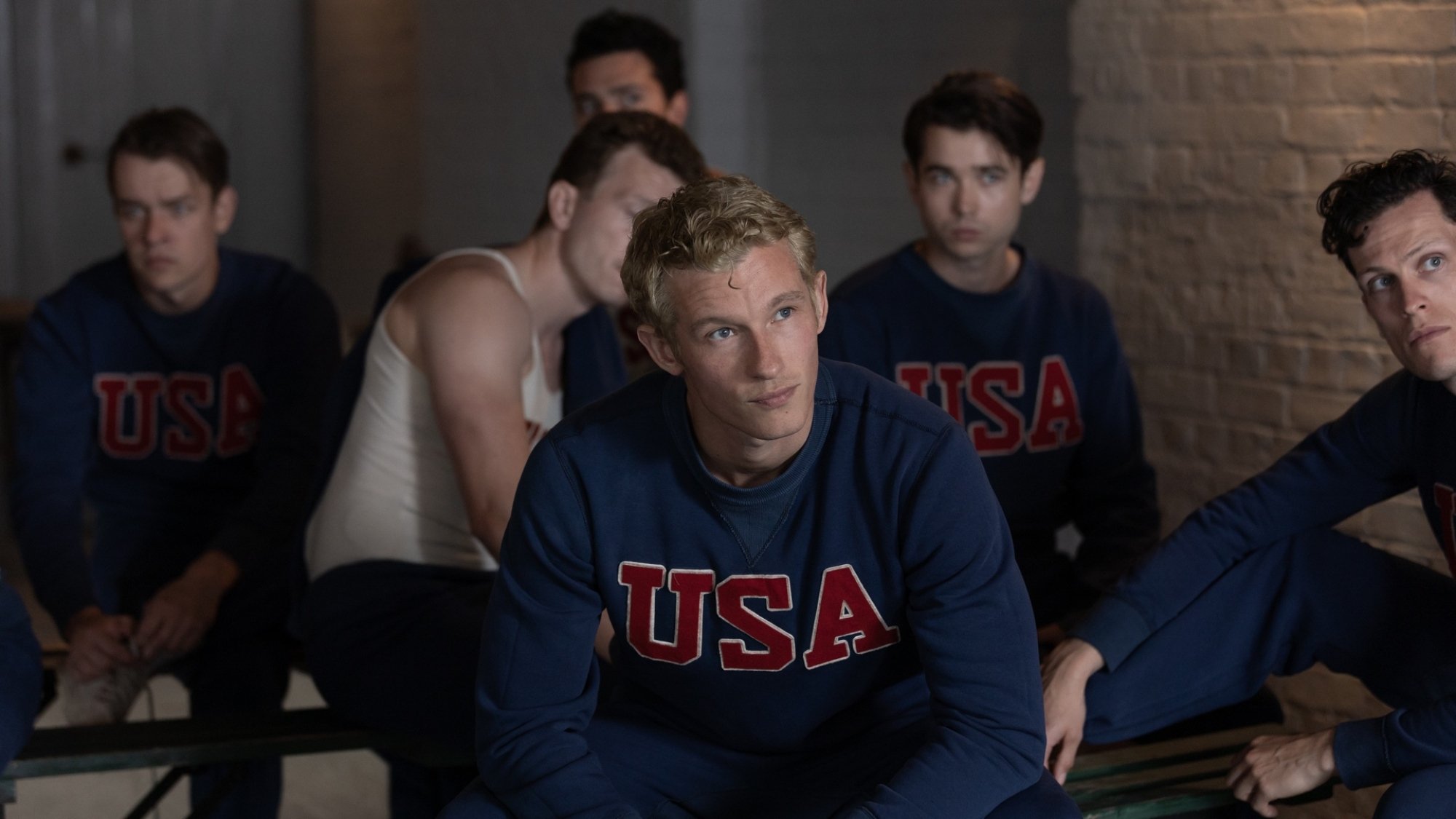
For a perfect companion piece to The Boys in the Boat, look no further than The Monuments Men, his 2014 period drama whose premise and central problems map perfectly onto his latest. In The Monuments Men, a high-caliber cast teams up to rescue kidnapped art and culture from Nazi clutches, but the film has little cultural outlook itself, beyond a passing fascination with the idea of a reverse art theft. This is despite the fact that the film’s central battalion was made up of art historians and curators.
Similarly, The Boys in the Boat is a film of athletes, and it’s filled with numerous rowing scenes, yet its conception of rowing itself is dull and disconnected. The motion of rowing can feel repetitive and mechanical, but to present it as such represents a failure of filmmaking imagination, since the scenes in which the act unfolds are usually about competition, intensity, and adversity. It’s a racing movie after all, but it lacks the visceral feel of one.
It’s also ostensibly a World War II movie, despite being set a year before the war in the Pacific and five years before Pearl Harbor. Its final act is set against a backdrop of Nazi flags, as the Olympics in Berlin were presided over by the Führer himself. And yet, the era’s looming antisemitism doesn’t feature in mood or tone. The Nazi swastika represents nothing for the movie’s white characters, and it means nothing to the camera either. It’s presented incidentally, rather than with a sense of omen or danger — let alone with any hint that Hitler was using these games as a propaganda tool, barring Jewish athletes.
In order to gesture towards the era’s white supremacy, the film invokes the name and image of Black runner Jesse Owens (Jyuddah Jaymes) and, in a few seconds, lays out his struggles at home and abroad, albeit in passing. This acknowledgement, however, ends up being the movie’s death knell, since it reveals just how little its eponymous boys are fighting for in comparison. Worse, the film’s narrative ends up so scattered and harebrained that Rantz, despite being the central character for most of it, only features in its climactic scenes as a background character. Meanwhile, the movie pivots instead to a different character entirely, as though The Boys in the Boat had been his story all along.
It’s a confounding narrative decision, made all the more perplexing by the popular (and far superior) influences from which Clooney seems to draw.
The Boys in the Boat aims high, but lands low.
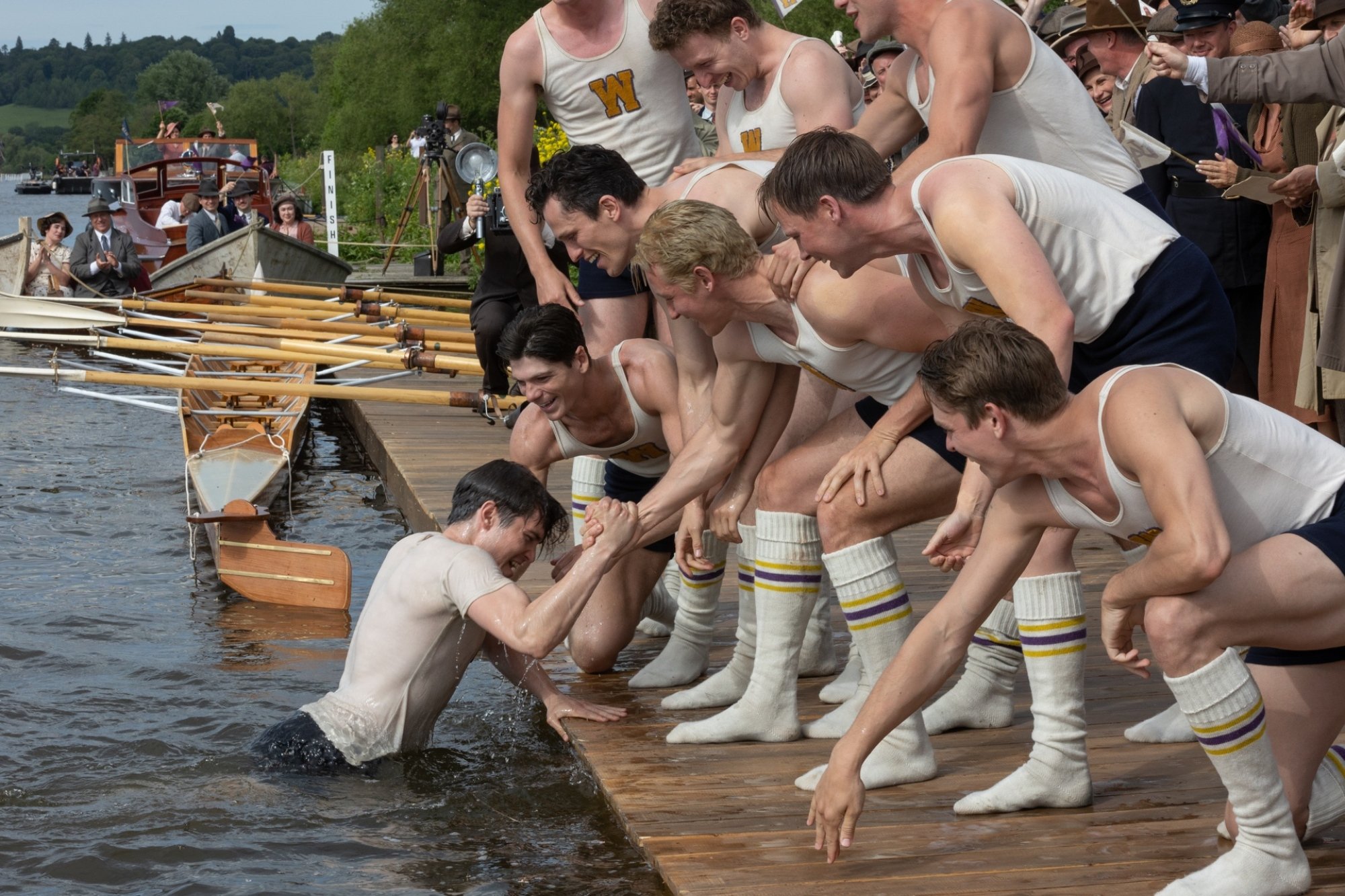
There’s a distinct sentimentality to the movie right from its opening scene — a flashforward bookend, in which an aged Rantz looks out at contemporary rowers before reflecting on his life — and composer Alexandre Desplat brings this nostalgia to life with his twinkling score. The film has all the hallmarks of a prestige drama from the ’80s or ’90s, whether the harrowing war movie Saving Private Ryan, the historical sports epic Chariots of Fire, or the coming-of-age drama Dead Poets Society.
And yet, it lacks the sense of drive and camaraderie that made those movies work. It never feels truly lived in, despite being intricately designed. Poverty is grumpily performed, but no one seems desperate or malnourished. Shoes with holes in them show up numerous times — most notably, during a moment when Ulbrickson stumbles upon his team’s footwear in their locker room and realizes how poor they are — but they’re treated, handled, and inspected as if they were squeaky-clean props rather than dirty, ragged articles of clothing. There’s no revulsion or discomfort or ignorance for Ulbrickson to overcome, and no sense of self-pity for his boys to embody.
It’s a movie that looks shiny on pause, but feels fake when played in full, resulting in a phoned-in, faux feel-good directorial effort in which little is learned or overcome. It has no outlook, or at least none the camera is able to mine from its stilted, medium close-up portraits, which last too long without having the characters react to anything in particular. It’s entirely empty and, given the significance of its subjects and setting — an underdog working-class team setting records in a bougie sport, and competing at a dangerous time and place in history — it becomes insulting in the process.
How to watch: The Boys in the Boat opens in theaters Dec. 25.
